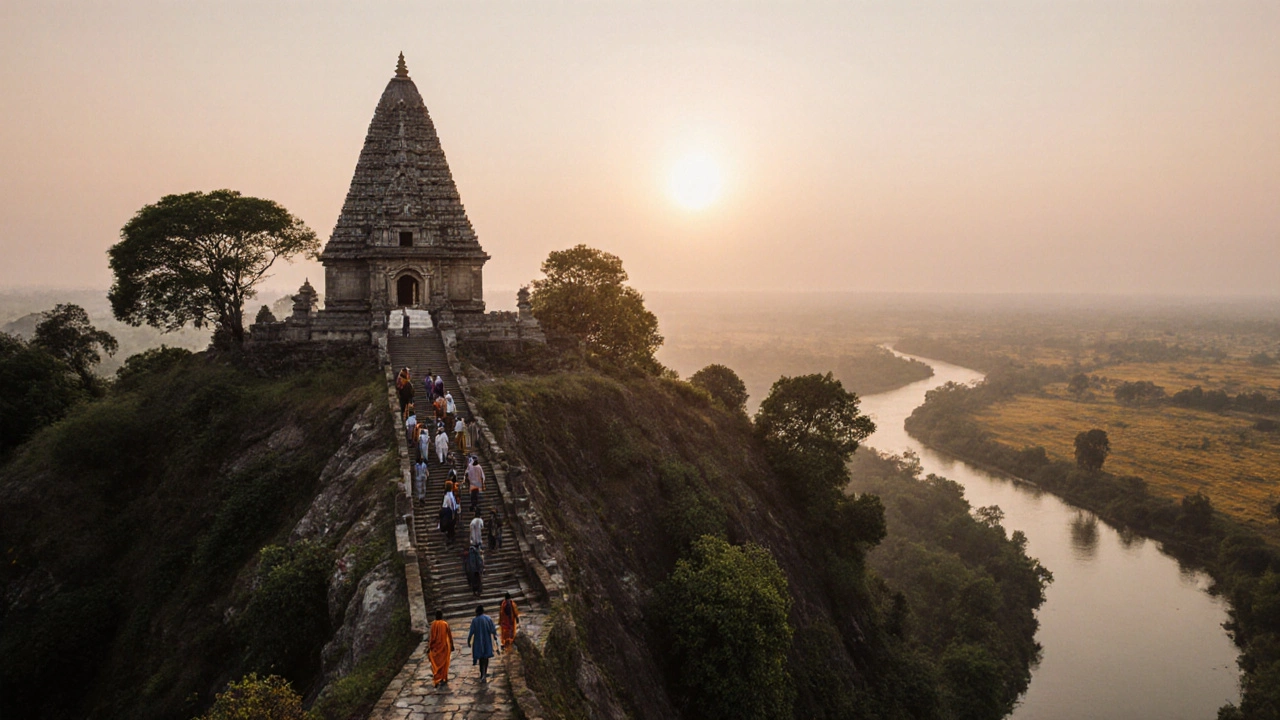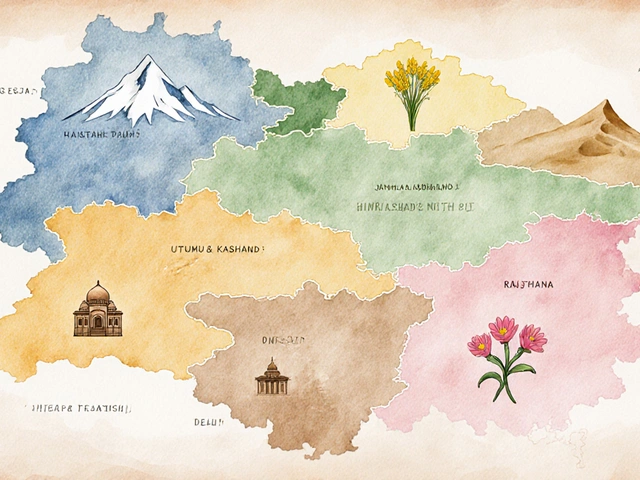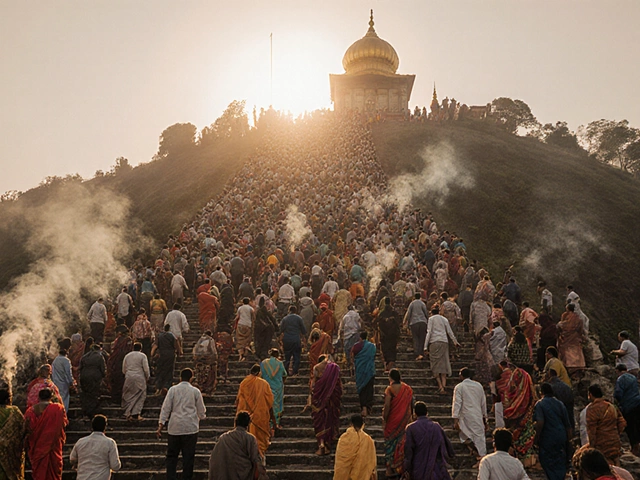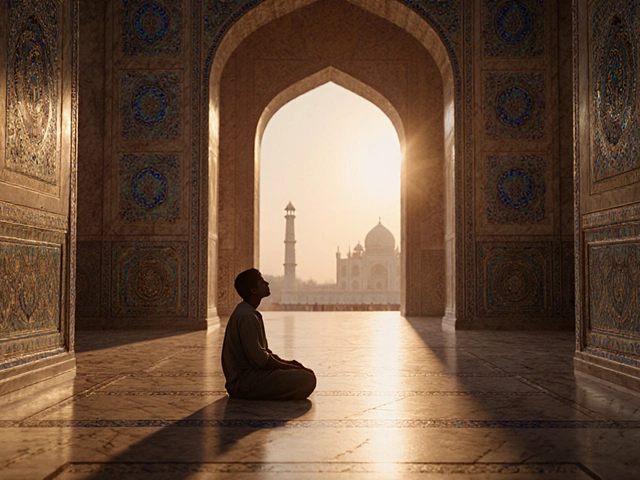Mundeshwari Temple Age Explorer
Temple Age Comparison
Explore the difference between legendary age claims and archaeological evidence
Mundeshwari Temple
According to local folklore, the temple is said to be 10,000 years old, symbolizing its timeless sanctity.
Scientific dating places the current structure around the 3rd–4th century CE, though the site has been sacred for millennia.
Click "Compare Ages" to see how Mundeshwari's claimed age stacks up against other ancient temples.
Did You Know?
The term "Mundeshwari" means "Goddess of the Priest". The temple is dedicated to the divine couple Shiva and Shakti, reflecting the rich tradition of dual deity worship in Hinduism.
When travelers ask, “Which temple is 10,000 years old in India?”, the answer that most locals point to is the Mundeshwari Temple, a stone‑built shrine perched on a hilltop in Bihar that locals claim dates back ten millennia.
Key Takeaways
- The Mundeshwari Temple in Bihar is traditionally believed to be 10,000years old.
- Archaeological surveys suggest construction in the 3rd-4thcenturyCE, making it one of India’s oldest surviving stone temples.
- Dedicated to Shiva and Shakti, the temple follows an early Nagara style with a distinctive sanctum‑sanctorum.
- Managed by the Archaeological Survey of India, it is open to pilgrims year‑round.
- Visiting tips: fly into Patna, then a 2‑hour drive to Lakhisarai; best time is post‑monsoon (Oct‑Mar).
Where Is Mundeshwari Temple Located?
The temple sits on the banks of the Kajal River in the Lakhisarai district of Bihar, eastern India. The site is a modest hill, about 150meters above the surrounding plain, offering panoramic views of the river’s meanders.
Reaching the temple is straightforward: Patna’s Lok Nayak Jayaprakash Airport receives daily flights from Delhi and Kolkata. From Patna, a taxi or state‑run bus takes you south along NH-33 to the town of Chewara, followed by a short ascent to the shrine.
Legends and the 10,000‑Year Claim
Local folklore ties the temple to the Vedic epoch, recounting that the sage Mundari (sometimes identified with the Mahabharata’s sage Mundaka) performed a ritual here that summoned the divine duo Shiva and Shakti. The narrative says the stone altar was formed when their cosmic energy solidified into rock, giving the shrine an age of “ten thousand years”-a symbolic way to stress its timeless sanctity.
These legends are echoed in several ancient texts, including the Shiva Purana, which mentions a “Munda‑Kota” where a perpetual flame burned for ages. While the exact phrasing varies, scholars agree the reference likely points to the modern Mundeshwari site.
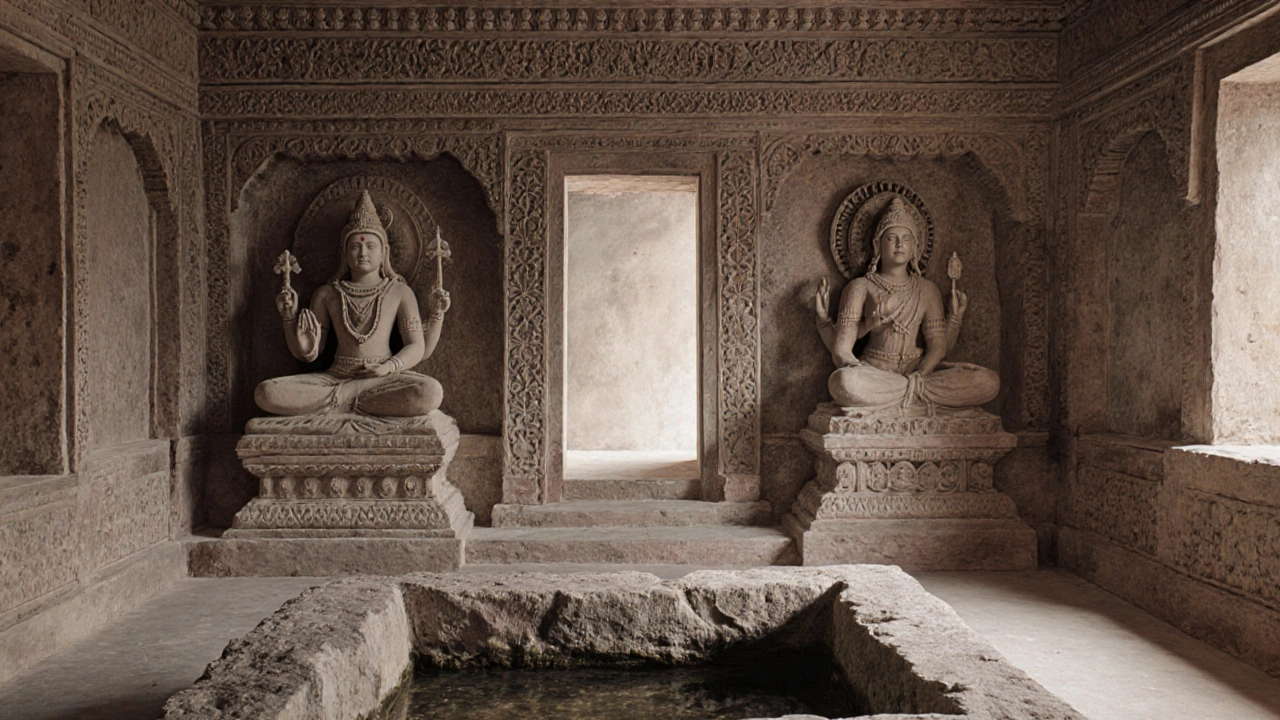
Archaeological Evidence and Dating
Modern examinations tell a more nuanced story. The Archaeological Survey of India (ASI) first recorded the temple in the 1930s, noting its stone construction-a rarity for that period. Subsequent excavations in the 1960s uncovered pottery shards, copper coins, and terracotta figurines dated to the 3rd-4thcenturyCE, aligning the temple’s core structure with the post‑Gupta era.
Radiocarbon tests on organic material found in the foundation yielded a calibrated range of 250BCE to 150CE, suggesting the site may have been sacred even before the stone edifice was erected. In other words, the location’s worship history could indeed span several millennia, though the standing temple itself is likely around 1,800years old.
Architectural Features: Early Nagara Style
The shrine’s plan follows a simple but elegant layout: a rectangular sanctum sanctorum (garbhagriha) housing the Shiva lingam, a vestibule (antarala), and an open porch (mandapa). The superstructure-the shikhara-rises as a modest, pyramidal tower, predating the later curvilinear Nagara spires seen in North Indian temples.
Key elements include:
- Stone lintels with intricate floral motifs, demonstrating skilled carpentry translated into stone.
- Dual deity worship: a Shiva lingam on one side and a Shakti image (often a stylized Devi) on the opposite, reflecting the temple’s name-Mundeshwari (Munda = priest, Ishwari = goddess).
- Water tank (kund) carved out of the same rock, used for ritual ablutions.
These features mark the temple as a transitional piece between early wooden shrines and later stone masterpieces, making it a vital reference point for scholars studying the evolution of Hindu temple architecture.
Visiting the Shrine: Practical Tips
Because the site is managed by the ASI, entry is free and there are no strict visiting hours; the gate typically opens at sunrise and closes after dusk. However, local priests conduct daily puja at 6am and 6pm, so plan your visit around those times if you wish to observe the rituals.
Recommended itinerary for a day trip:
- Arrive in Patna early morning, take a pre‑booked taxi to Lakhisarai (≈2hrs).
- Stop at Barabar Caves on the way for a quick heritage detour.
- Reach Mundeshwari Temple by 11am, explore the sanctum, the ancient water tank, and the surrounding verandas.
- Enjoy a simple vegetarian lunch at the nearby village dhaba, which serves local dishes like litti‑chokha.
- Take a leisurely walk along the Kajal Riverbank before heading back to Patna in the late afternoon.
Best season: October to March, when the weather is cool and the surrounding fields turn golden. Monsoon brings occasional road closures, while summer (May‑June) can be scorching.
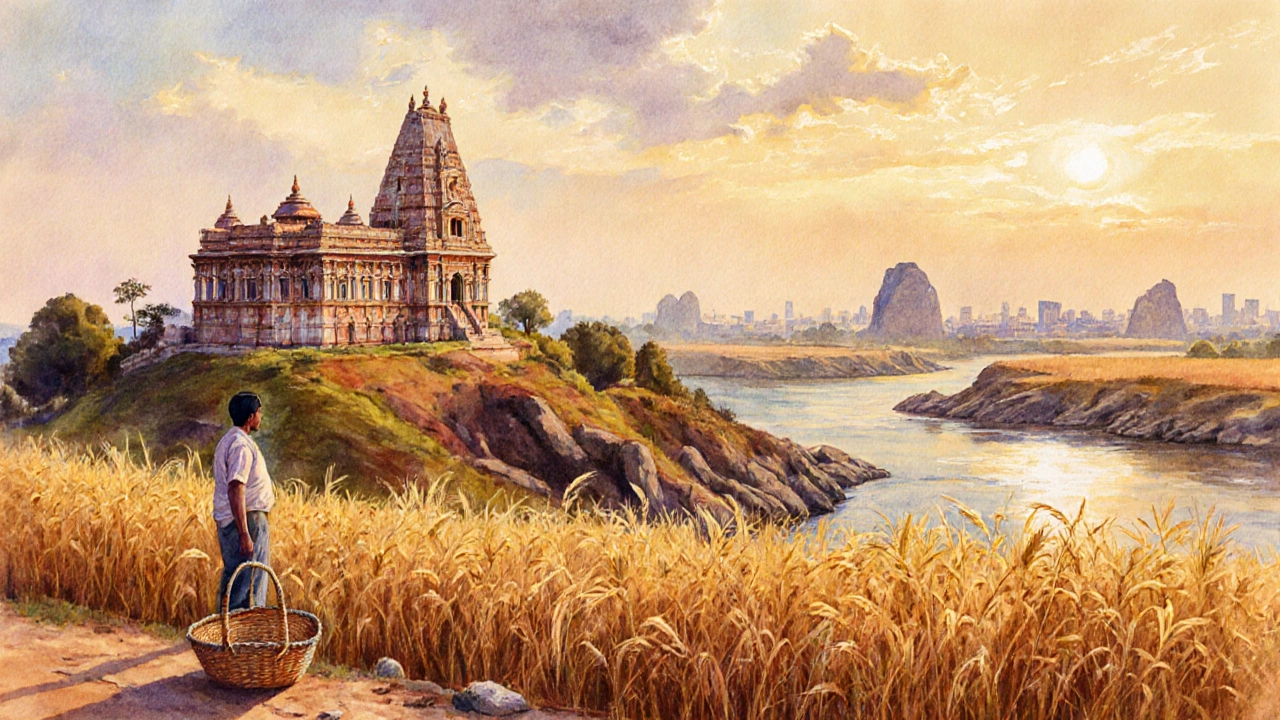
How Mundeshwari Stacks Up Against Other Ancient Indian Temples
| Temple | Claimed Age | Archaeologically Verified Age | Primary Deity | Architectural Style | Location |
|---|---|---|---|---|---|
| Mundeshwari Temple | 10,000years (local legend) | ~1,800years (3rd-4thcenturyCE) | Shiva & Shakti | Early Nagara | Lakhisarai, Bihar |
| Mahadev Temple, Kedarnath | ~5,000years (mythic) | 8thcenturyCE (re‑built after 2013 flood) | Shiva | Himalayan, Uttarakhand | |
| Kailasa Temple, Ellora | 1,200years | 8thcenturyCE (Rashtrakuta) | Shiva | Ellora, Maharashtra | |
| Brihadeeswarar Temple, Thanjavur | 1,000years | 11thcenturyCE (Chola) | Shiva | Thanjavur, TamilNadu |
While all these shrines share the reverence for Shiva, Mundeshwari’s claim of a 10,000‑year lineage sets it apart in cultural memory, even if scientific dating tells a younger story.
Frequently Asked Questions
Is Mundeshwari Temple really 10,000 years old?
Locally it is described as 10,000years old, a figure that reflects mythic reverence rather than archaeological proof. Scientific studies date the standing stone structure to around the 3rd-4thcenturyCE, making it about 1,800years old. The site’s worship, however, may indeed stretch back several millennia.
What deities are worshipped here?
The temple houses a Shiva lingam on one side and a Shakti (Devi) statue on the opposite, embodying the divine couple that the name "Mundeshwari" invokes.
Do I need a special permit to visit?
No. The temple is free to the public and managed by the ASI. Just bring a valid ID for security checks and follow local dress codes (no shorts or sleeveless tops).
What is the best time of year to go?
October through March offers pleasant weather and clear skies, ideal for both pilgrimage and photography.
Are there any nearby attractions?
Yes. The Barabar Caves (rock‑cut Jain sanctuaries) lie about 30km away, and the historic town of Patna offers museums like the Patna Museum and the Bihar Museum.
Next Steps for the Curious Traveler
If you’re planning a heritage‑focused trip to India, slot Mundeshwari Temple in a broader Bihar itinerary that includes Bodh Gaya, Nalanda, and Patna. Book a reliable driver or join a small‑group tour to avoid getting lost on rural roads. Pack comfortable walking shoes, a water bottle, and a modest dress code.
For history buffs, consider reading the ASI’s excavation report (published in the 1970s) alongside the Shiva Purana translations. The juxtaposition of myth and material evidence makes Mundeshwari a fascinating case study of how ancient narratives shape modern heritage perception.
Whether you’re chasing the legend of a 10,000‑year‑old shrine or simply want to stand before one of India’s earliest stone temples, Mundeshwari offers a quiet, almost meditative experience that lets you feel the weight of centuries beneath your feet.
